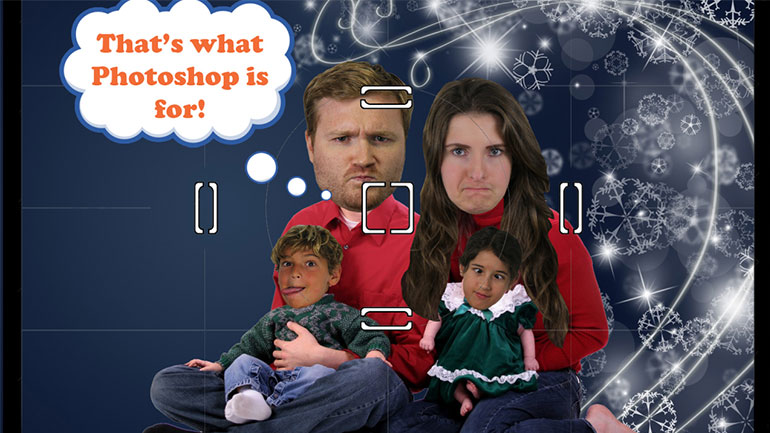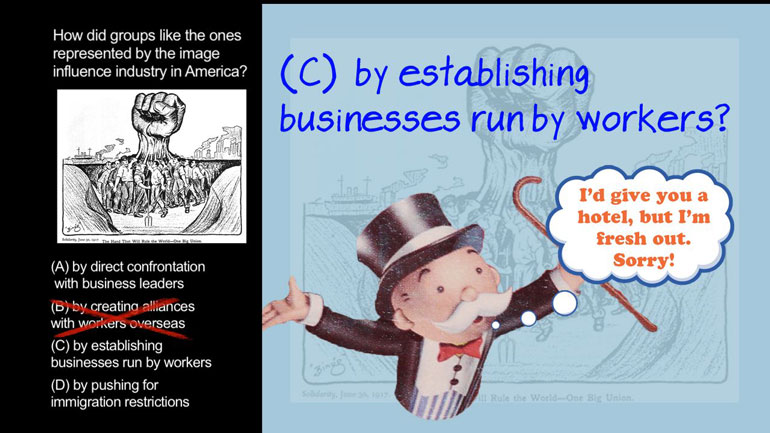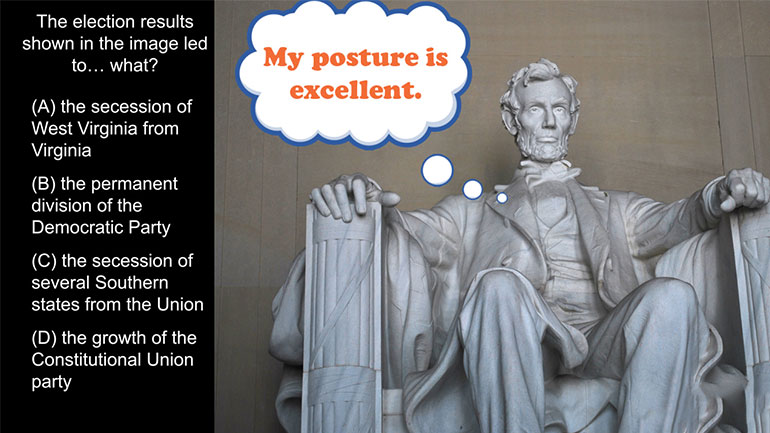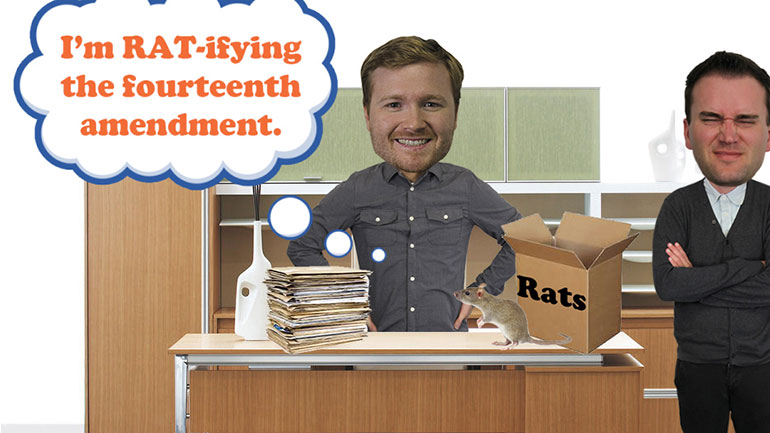ShmoopTube
Where Monty Python meets your 10th grade teacher.
Search Thousands of Shmoop Videos
AP U.S. History 2.3 Period 9: 1980-Present 196 Views
Share It!
Description:
In this AP U.S. History question figure out how immigration laws fundamentally changed in the 1980s. AP U.S. History: Imperialism in 19th Century Drill 1, Problem 1
Transcript
- 00:00
[ musical flourish ]
- 00:03
And here's your Shmoop du jour, brought to you by the attorney general,
- 00:07
every law office's biggest war buff.
- 00:12
All right, first up, the excerpt.
- 00:13
[ mumbles ]
Full Transcript
- 00:16
[ mumbling continues ]
- 00:19
All right, and now the question:
- 00:21
Immigration laws fundamentally changed in the 1980s
- 00:24
because they... what?
- 00:27
And here are your potential answers.
- 00:31
All right, what clues can we gather from this passage?
- 00:34
The term "alien" here refers to, no, not extraterrestrial,
- 00:38
an undocumented worker in the United States or someone who is
- 00:42
in the country without proper paperwork.
- 00:44
And in this excerpt, we see that the Immigration Reform and Control Act,
- 00:48
or IRCA, granted lawful temporary residence
- 00:51
if those aliens met certain requirements.
- 00:54
So let's keep these details in mind as we search for the answer
- 00:58
best describing the shift in policy at this time.
- 01:01
Did immigration laws fundamentally change in the 1980s because they A -
- 01:05
eliminated visa quotas?
- 01:07
Well, actually, the IRCA didn't change the allocation
- 01:10
of visa numbers at all, so that eliminates A and B.
- 01:12
Could these immigration laws have changed by D -
- 01:15
granting amnesty to all permanent residents?
- 01:18
Well, we saw in the excerpt that the IRCA did create a path for amnesty,
- 01:22
but that road was long and winding, containing many stipulations that immigrants
- 01:26
couldn't meet. So it isn't D, either.
- 01:28
That means U.S. immigration laws fundamentally changed
- 01:32
in the 1980s because they C -
- 01:34
levied penalties against employers of illegal immigrants.
- 01:38
The sponsors of the IRCA believed they could crack
- 01:40
down on undocumented workers if they made jobs scarcer for these individuals.
- 01:46
So under the new law, employers were punished and had to pay
- 01:49
big fines for employing anyone
- 01:51
living in the U.S. illegally who was on their
- 01:53
payroll. So that makes C the right answer.
- 01:55
And in fact, anyone hired for a job today fills out an I9 form,
- 01:59
which was created at this time to make sure every employer
- 02:02
could verify the residency status of his or her employees.
- 02:06
So remember, if you go in for an interview,
- 02:09
you better get dressed up to the I9s.
Up Next
AP U.S. History Diagnostic 1. Relationships like the one shown in the image resulted in the development of...what?
Related Videos
AP U.S. History Diagnostic 15. How did groups like the ones represented by the image influence industry in America?
AP U.S. History Diagnostic 10. What led to the splintering of the political parties shown in the image?
AP U.S. History Diagnostic 11. The election results shown in the image led to...what?
AP U.S. History Diagnostic 12. How did the Reconstruction Acts open up political opportunities for former slaves?




